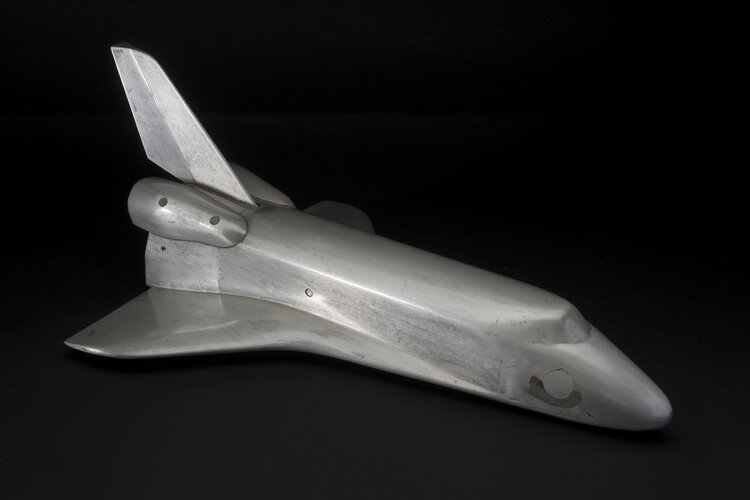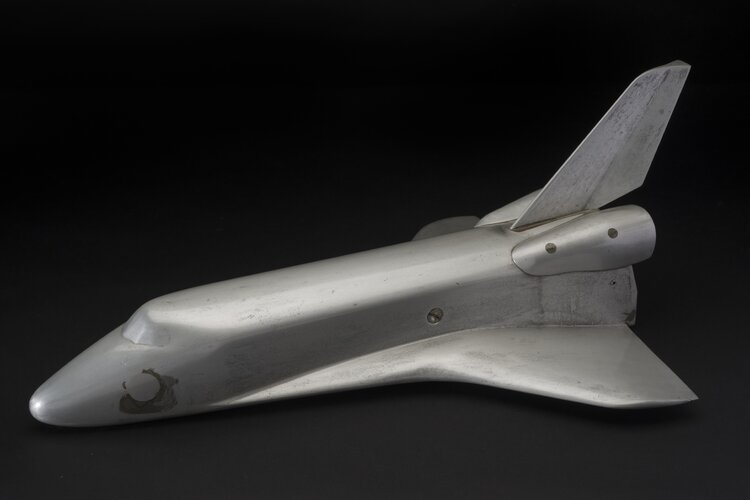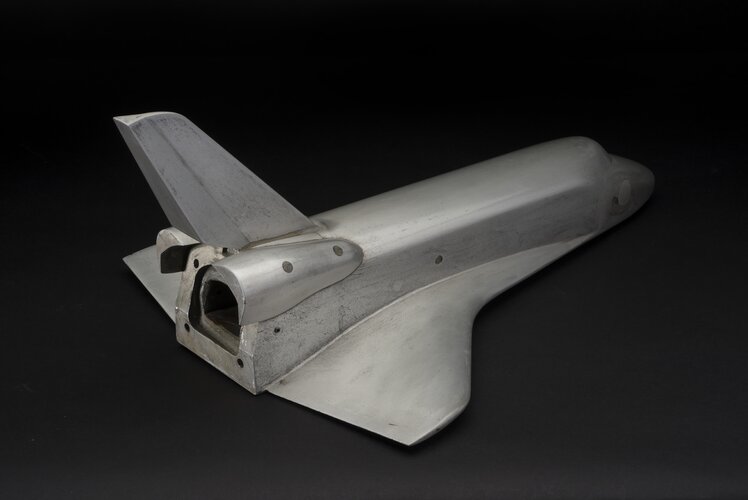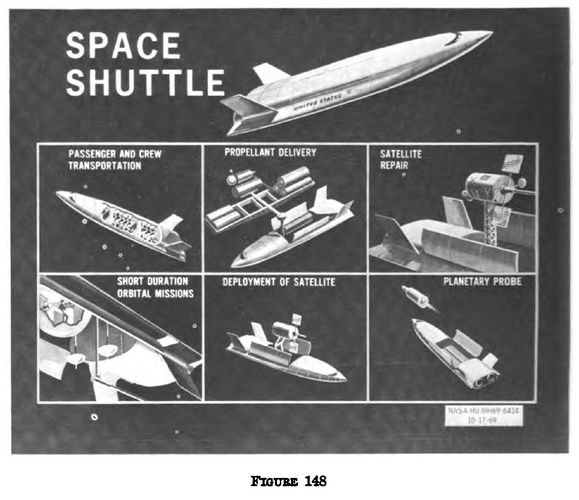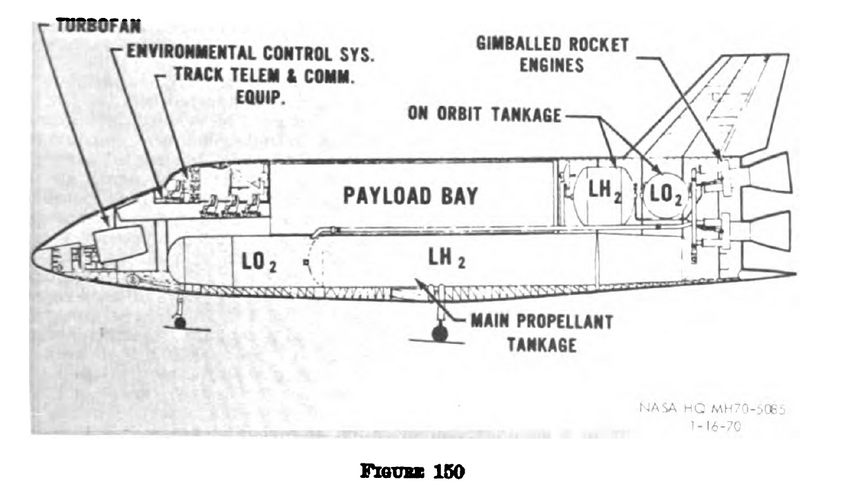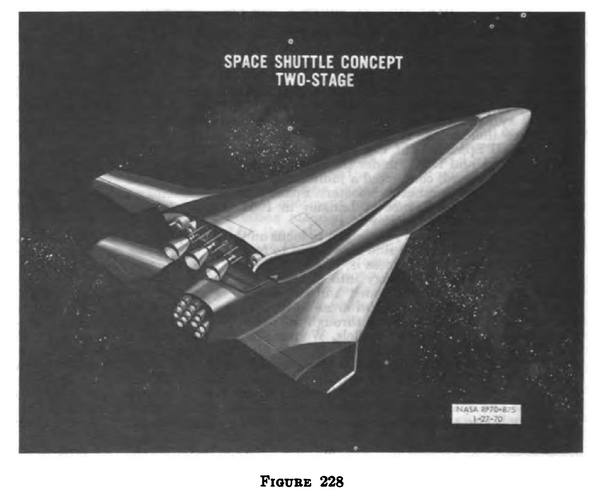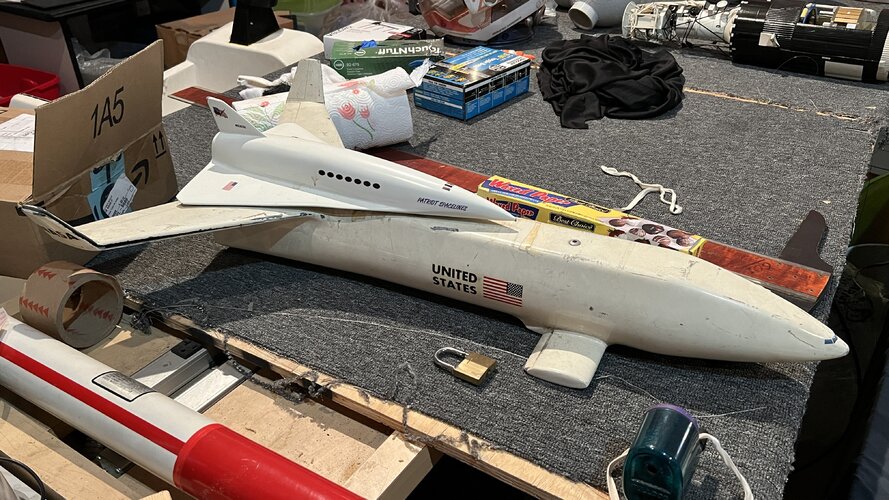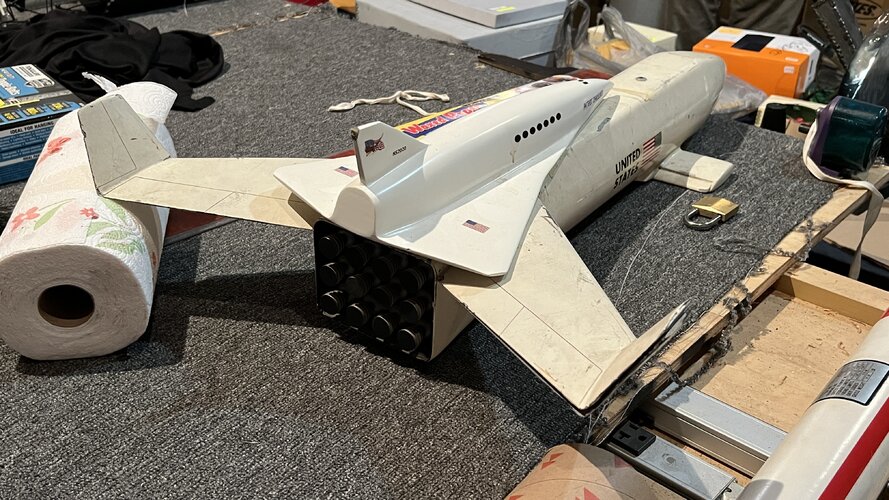Not the same or as simple. Titan augementation was just like a stage, just a mechanical interface. SLS boat-tail would require severing multiple fluid interfaces. And still would serve no purpose.Just have the SLS aft boat-tail attach like the Titan augmentation here:
You are using an out of date browser. It may not display this or other websites correctly.
You should upgrade or use an alternative browser.
You should upgrade or use an alternative browser.
Various US Reusable Launch Vehicles (RLV) Projects
- Thread starter PMN1
- Start date
Not the same or as simple. Titan augementation was just like a stage, just a mechanical interface. SLS boat-tail would require severing multiple fluid interfaces. And still would serve no purpose.Just have the SLS aft boat-tail attach like the Titan augmentation here:
Suspect he's aiming towards making it recoverable, which as you note would not make sense given the expected flight rate.
Randy
That doesn't mean it is right or viable.It would be similar to Zubrin's Ares-leaving the tank as a station hull.
Not even at higher rates either. It is near orbital velocity. entry and recovery (distance) don't make sense.Not the same or as simple. Titan augementation was just like a stage, just a mechanical interface. SLS boat-tail would require severing multiple fluid interfaces. And still would serve no purpose.Just have the SLS aft boat-tail attach like the Titan augmentation here:
Suspect he's aiming towards making it recoverable, which as you note would not make sense given the expected flight rate.
Randy
The studies for such recovery pods had issues with recovery of non-lifting pods (they landed in the Australian Outback or Northern Mexico both of which were hard to recover from) whereas the lifting pods were easier to recovery but more complex and expensive to develop.That doesn't mean it is right or viable.It would be similar to Zubrin's Ares-leaving the tank as a station hull.
Not even at higher rates either. It is near orbital velocity. entry and recovery (distance) don't make sense.Not the same or as simple. Titan augementation was just like a stage, just a mechanical interface. SLS boat-tail would require severing multiple fluid interfaces. And still would serve no purpose.Just have the SLS aft boat-tail attach like the Titan augmentation here:
Suspect he's aiming towards making it recoverable, which as you note would not make sense given the expected flight rate.
Randy
SLS is just not going to have the flight rate to justify the effort.
Randy
It would be similar to Zubrin's Ares-leaving the tank as a station hull.
The tanks still have most of the issues for conversion as the Shuttle ET and again the flight rate isn't enough to justify the effort.
Randy
martinbayer
ACCESS: Top Secret
- Joined
- 6 January 2009
- Messages
- 3,384
- Reaction score
- 3,878
I truly hope that the honest to god beginning of our ecologically and financially sustainable and ever expanding future in space will be based on an actual fully functional, reliable, short turnaround, low life cycle cost, 100 % completely reusable with environmentally friendly propellants and full payload return capability, launch vehicle, be it muskian or not.
Last edited:
martinbayer
ACCESS: Top Secret
- Joined
- 6 January 2009
- Messages
- 3,384
- Reaction score
- 3,878
In the overall systems engineering process, first you come up with a clear mission objective. Then you come up with abstract architecture alternatives to achieve that mission objective. Then you develop high level design solutions for each of those alternatives. And only then you start to systematically evaluate those solutions against the defined objectives on the basis of a consistent set of criteria. publiusr, you seem to try to come up with justifications for pet solutions looking for a problem. I think the colloquial expression is putting the cart before the horse.Whatever the ills of wet workshops-they don't need tiles, landing legs. What if that perfect RLV has to be grown in space? The big floorspace destinations have to come first to justify the RLVs.
Last edited:
You launch a dry workshop without the tiles and landing legs.Whatever the ills of wet workshops-they don't need tiles, landing legs. What if that perfect RLV has to be grown in space? The big floorspace destinations have to come first to justify the RLVs.
In the overall systems engineering process, first you come up with a clear mission objective. Then you come up with abstract architecture alternatives to achieve that mission objective. Then you develop high level design solutions for each of those alternatives. And only then you start to systematically evaluate those solutions against the defined objectives on the basis of a consistent set of criteria. publiusr, you seem to try to come up with justifications for pet solutions looking for a problem. I think the colloquial expression is putting the cart before the horse.Whatever the ills of wet workshops-they don't need tiles, landing legs. What if that perfect RLV has to be grown in space? The big floorspace destinations have to come first to justify the RLVs.
And to put a point on this we HAVE studies on "repurposed pressurized spaces" for use in space and the pretty clear answer is they DO make some sense given certain operational and other factors but we are nowhere near that point at this time nor are we likely to be soon.
It can be done and it can be economical, that's not an argument, what is needed is a certain background and infrastructure which does not exist yet. Till it does it's simply not worth putting in significant effort beyond basic research and development which is ongoing.
You launch a dry workshop without the tiles and landing legs.Whatever the ills of wet workshops-they don't need tiles, landing legs. What if that perfect RLV has to be grown in space? The big floorspace destinations have to come first to justify the RLVs.
And this will remain the default for the foreseeable future, one reason being the lack of a good 'working' space suit design and another being the low flight/operations rate makes such designs easier and more cost effective.
More 'back-on-subject' but we still have plenty of Shuttle ET studies to reference that showed the "problems" were soluble if we'd needed it and current studies back this up. We just don't need it atm
Randy
About that:
 www.thespaceshow.com
www.thespaceshow.com
But forgetting workshops for a moment—
Has anyone drawn what the shuttle external tanks might look like if other propellants were used? That might be a good art project.
The reason external tankage interests me isn’t just in workshops, but in keeping whatever shuttle orbiter you have svelte.
Say the External Tank was very like the old Deltoid Pumpkinseed airship.
It, with or without engines would land separately…leaving the orbiter a simpler affair—and less of an eggshell. So if you must fly your tankage back—keep it away from everything else.
We have had this myth of “separate crew and cargo” beaten into our heads…but both are dense. It is the tankage which can be unwieldy and dangerous.
The concept of rocket AS payload is really what my goal is.
With airplanes—you can put fuel in them and have plenty of room left over. Rockets are the opposite.
The spectre of the SSTO that flies often so you can then assemble things is what needs questioning. That’s like physicists searching for elegance.
I’m an outsider—you are all much brighter than I could ever be…but that allows me perhaps a fresh perspective. Am I the impractical one? Or is Musk.
My viewpoint is to embrace the ugliness of rocketry.
Musk wants that Disneyland TWA liner to live so badly he can’t stand it.
I wrote that off years ago.
One quote over at the Cosmoquest Forum (where the Bad Astronomy forum went to die) is something to the effect of “with sufficient thrust, water towers fly just fine.”
But I have no desire to ride atop it with no escape tower.
Rocket guys lament that Titan II was really the only true SSTO we ever had—but that it had “no payload.”
I say that tube IS your payload. Just make it a hydrogen filled tube that is less nasty.
“But that is bloated and”
—means more floorspace.
Or if you insist on reuse—having just the tankage coming down hollow means less wing loading, yes?
Slim Pickins had the wrong idea…riding a fat cylinder down to his death.
I just want to hitch a ride up and make a house out of mine.
Ironically, Starship-SuperHeavy is the kind of tech-heavy deal I expect from governments, with a stage-and-a-half to orbit that you fashion into a hab seems more “Muskian” on its face.
2001’s spaceplane spoiled us. SSTOs are the stripper people rain money on thinking they can take her home. Though not funded enough, NASP, Orient Express, X-33/Venture Star were still funded better than wet workshops. The latter only suffer engineering issues—the former? Physics issues.
Which is easier—putting a sleeve over ET popcorning foam…or building a scramjet that won’t go out or melt?
Broadcast 3801 Gene Meyers | The Space Show
 www.thespaceshow.com
www.thespaceshow.com
But forgetting workshops for a moment—
Has anyone drawn what the shuttle external tanks might look like if other propellants were used? That might be a good art project.
The reason external tankage interests me isn’t just in workshops, but in keeping whatever shuttle orbiter you have svelte.
Say the External Tank was very like the old Deltoid Pumpkinseed airship.
It, with or without engines would land separately…leaving the orbiter a simpler affair—and less of an eggshell. So if you must fly your tankage back—keep it away from everything else.
We have had this myth of “separate crew and cargo” beaten into our heads…but both are dense. It is the tankage which can be unwieldy and dangerous.
The concept of rocket AS payload is really what my goal is.
With airplanes—you can put fuel in them and have plenty of room left over. Rockets are the opposite.
The spectre of the SSTO that flies often so you can then assemble things is what needs questioning. That’s like physicists searching for elegance.
I’m an outsider—you are all much brighter than I could ever be…but that allows me perhaps a fresh perspective. Am I the impractical one? Or is Musk.
My viewpoint is to embrace the ugliness of rocketry.
Musk wants that Disneyland TWA liner to live so badly he can’t stand it.
I wrote that off years ago.
One quote over at the Cosmoquest Forum (where the Bad Astronomy forum went to die) is something to the effect of “with sufficient thrust, water towers fly just fine.”
But I have no desire to ride atop it with no escape tower.
Rocket guys lament that Titan II was really the only true SSTO we ever had—but that it had “no payload.”
I say that tube IS your payload. Just make it a hydrogen filled tube that is less nasty.
“But that is bloated and”
—means more floorspace.
Or if you insist on reuse—having just the tankage coming down hollow means less wing loading, yes?
Slim Pickins had the wrong idea…riding a fat cylinder down to his death.
I just want to hitch a ride up and make a house out of mine.
Ironically, Starship-SuperHeavy is the kind of tech-heavy deal I expect from governments, with a stage-and-a-half to orbit that you fashion into a hab seems more “Muskian” on its face.
2001’s spaceplane spoiled us. SSTOs are the stripper people rain money on thinking they can take her home. Though not funded enough, NASP, Orient Express, X-33/Venture Star were still funded better than wet workshops. The latter only suffer engineering issues—the former? Physics issues.
Which is easier—putting a sleeve over ET popcorning foam…or building a scramjet that won’t go out or melt?
Last edited:
Again, so much wrong1. Has anyone drawn what the shuttle external tanks might look like if other propellants were used? That might be a good art project.
2. It, with or without engines would land separately…leaving the orbiter a simpler affair—and less of an eggshell. So if you must fly your tankage back—keep it away from everything else.
3. We have had this myth of “separate crew and cargo” beaten into our heads…but both are dense. It is the tankage which can be unwieldy and dangerous.
4. The concept of rocket AS payload is really what my goal is.
5. Am I the impractical one?
6. One quote over at the Cosmoquest Forum (where the Bad Astronomy forum went to die) is something to the effect of “with sufficient thrust, water towers fly just fine.”
7. I say that tube IS your payload. Just make it a hydrogen filled tube that is less nasty.
8. Or if you insist on reuse—having just the tankage coming down hollow means less wing loading, yes?
9. I just want to hitch a ride up and make a house out of mine.
10. Ironically, Starship-SuperHeavy is the kind of tech-heavy deal I expect from governments, with a stage-and-a-half to orbit that you fashion into a hab seems more “Muskian” on its face.
11. 2001’s spaceplane spoiled us. SSTOs are the stripper people rain money on thinking they can take her home. Though not funded enough, NASP, Orient Express, X-33/Venture Star were still funded better than wet workshops. The latter only suffer engineering issues—the former? Physics issues.
12. Which is easier—putting a sleeve over ET popcorning foam…or building a scramjet that won’t go out or melt?
1. Choice of propellants don't change the shape of the ET
2. See Starship
3. Not a myth. Great rule to follow until launch vehicles have airliner type reliability.
4. Starship
5. You got that right
6. Unvalidated. thrust doesn't matter. efficiency does't matter. What ever it takes to make a cost effective solution is what matters.
7. No. If you want a station, launch a station. Scarring a rocket to make a station doesn't work. Both are compromised. Current orbital infrastructure is inadequate to repurpose existing orbital hardware.
8. No wings needed.
9. Not feasible.
10 . It isn't tech-heavy.
11. Because wet workshops are not viable for the foreseeable future. And are not needed, no reason to spend the money on them. Not cost effective to compromise the rocket for a wet workshop.
12. False dichotomy. There are other better options.
martinbayer
ACCESS: Top Secret
- Joined
- 6 January 2009
- Messages
- 3,384
- Reaction score
- 3,878
Per the 2001 novel by Arthur C. Clarke, Orion III represented the orbiter stage of a rail track launched HTHL TSTO RLV, and NOT an SSTO.2001’s spaceplane spoiled us. SSTOs are the stripper people rain money on thinking they can take her home. Though not funded enough, NASP, Orient Express, X-33/Venture Star were still funded better than wet workshops. The latter only suffer engineering issues—the former? Physics issues.
Last edited:
No, not even cheaper but not feasible . Also hypergol hassles are worse.On 1). A hypergolic ET might have been slimmer, cheaper-though that might need more solids. No cryogenic hassles.
Let's do a hypergolic shuttle. We will use the RD-253 engine family. It has thrust near the SSME. Its ISP is 316 vacuum.
Let's use SRB separation as a starting point, 3000 mph. The Orbiter weighs 240klb and a 60klb ET at burn out at 17k mph.
Will use this calculator:
Tsiolkovsky Rocket Equation Calculator • Model Rockets • Online Unit Converters
This calculator determines the change in velocity (delta-v) of a spacecraft that is needed to perform a maneuver using the Tsiolkovsky rocket equation for the ...
Going to need possibly the 5 segment SRB, a 4th RD-253 and a heavier ET to carry the heavier propellants. All are more costs.
Edited:
Added.
Let's use flight duration of 8 minutes at MECO and hence 1/4 propellant would be used up at 2 minutes. Total propellant mass would be around 2.67M lb. That is 1,000,000 lb than the existing shuttle. SRB to ET and Orbiter to ET attached points would have to greatly beefed up, if even feasible.
The 5 segment SRB and another main engine isn't even enough.
Last edited:
- Joined
- 1 April 2006
- Messages
- 11,374
- Reaction score
- 10,200
Model, Space Shuttle, Final Orbiter Concept
NASA used this Space Shuttle orbiter concept model in wind tunnel tests to learn about the flight characteristics of the vehicle's shape.
Attachments
It wouldn't help. The issue with ditching was the orbiter would nose in after contact.While ferried-orbiters wore the cone-anyone look at inflates to smooth out the boat-tail-help in a ditching?
Because nobody wants or needs wet workshops. Responsive and cheap launch is what is wanted. That is why there is money to fund different studies. Wet workshops don't warrant any attention.2001’s spaceplane spoiled us. SSTOs are the stripper people rain money on thinking they can take her home. Though not funded enough, NASP, Orient Express, X-33/Venture Star were still funded better than wet workshops. The latter only suffer engineering issues—the former? Physics issues.
The engine block of any RLV is going to be heavy-another reason I like Buran type Shuttle 2. Starship perhaps float like the Flip ship? That has advantages.IIRC, turned out to 'minimax' better to establish 'diversion' runways. eg one on Easter Island !!
And the engines are wasted on that type of vehicle negating the prime feature of an RLV: reuse.The engine block of any RLV is going to be heavy-another reason I like Buran type Shuttle 2. Starship perhaps float like the Flip ship? That has advantages.
Buran wasn't trying to duplicate the cost reduction goals of the shuttle. The Soviets thought it was a large weapon platform. A Buran type shuttle makes no sense if you are trying to reduce costs.
Starship will avoid water at all costs. It won't float like a spar. See Falcon 9 first stage. Starship will be even more nose heavy.
In terms of cost reduction, could this be combined into something like ROOST…but also be a rogallo wing?
No, those add complexity and hence costs.
The side-view drawing…wouldn’t the payload bay have to be narrow…with extra tankage to either side of that to have enough in the way of propellant?
Did anyone propose solids to mate directly with such a wide, fuel-fat orbiter?
Did anyone propose solids to mate directly with such a wide, fuel-fat orbiter?
No, the payload bay is on top of the two sets of tanks.The side-view drawing…wouldn’t the payload bay have to be narrow…with extra tankage to either side of that to have enough in the way of propellant?
Did anyone propose solids to mate directly with such a wide, fuel-fat orbiter?
"(O)"
(O O)
The center picture is not the same orbiter as the ones in the first or last pictures.
Solids came after the orbiter propellant went into an external tank.
- Joined
- 26 May 2006
- Messages
- 34,869
- Reaction score
- 15,733
From this Report,
please notice,the Shuttle-Tug.
please notice,the Shuttle-Tug.
Attachments
-
 0.png91.1 KB · Views: 80
0.png91.1 KB · Views: 80 -
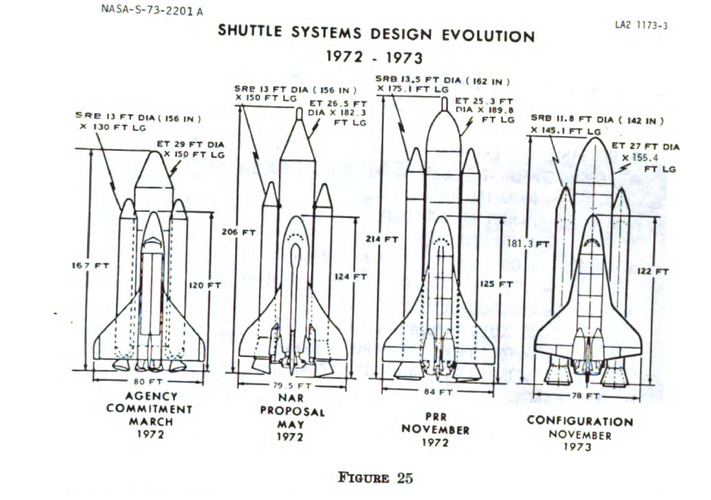 1.png844.3 KB · Views: 81
1.png844.3 KB · Views: 81 -
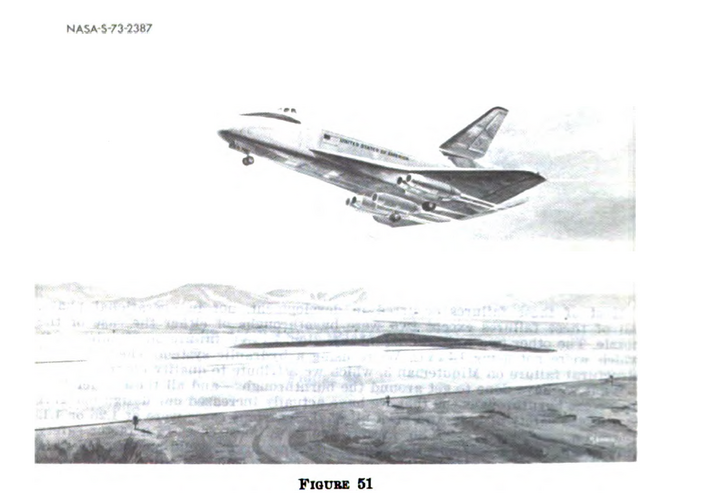 2.png665.3 KB · Views: 80
2.png665.3 KB · Views: 80 -
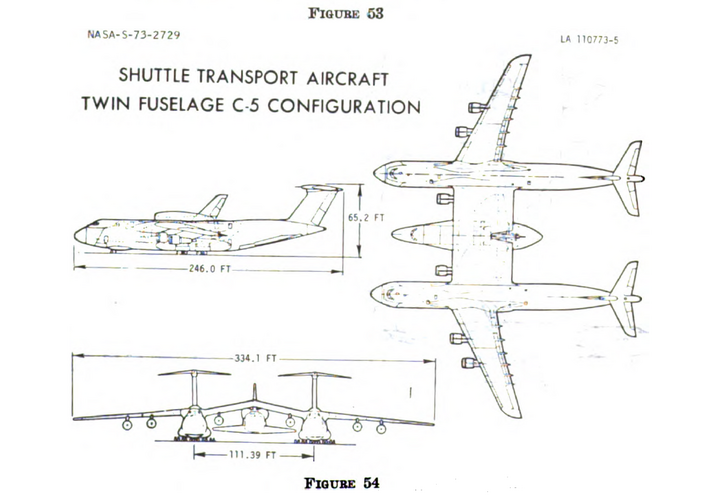 3.png480 KB · Views: 75
3.png480 KB · Views: 75 -
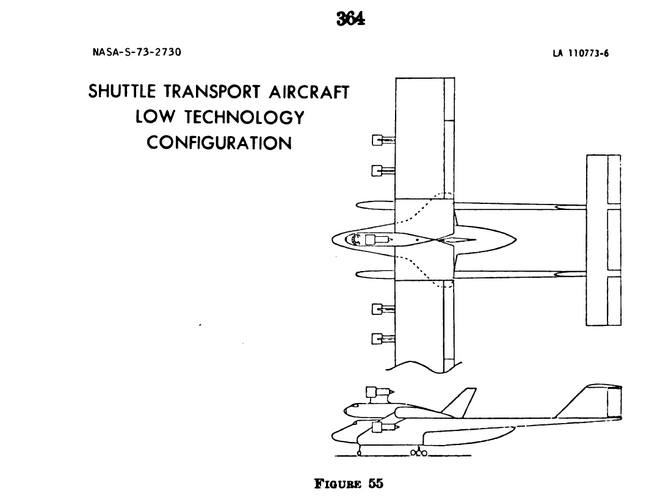 4.png38.8 KB · Views: 68
4.png38.8 KB · Views: 68 -
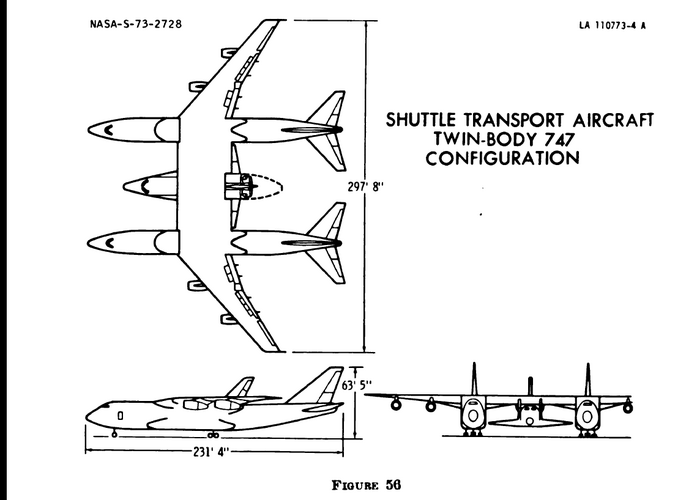 5.png56.5 KB · Views: 65
5.png56.5 KB · Views: 65 -
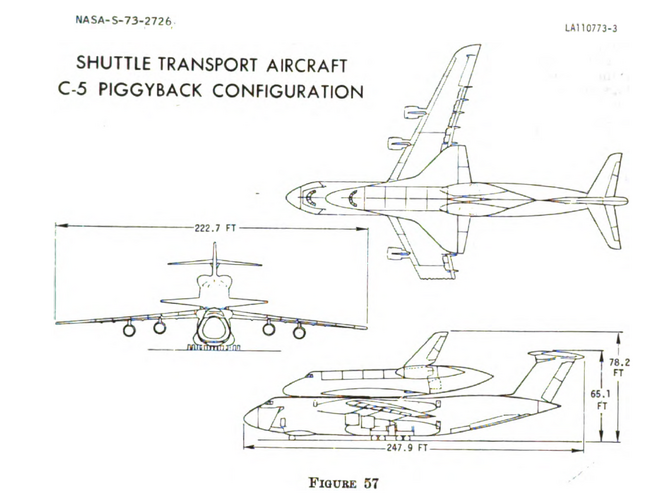 6.png494.2 KB · Views: 67
6.png494.2 KB · Views: 67 -
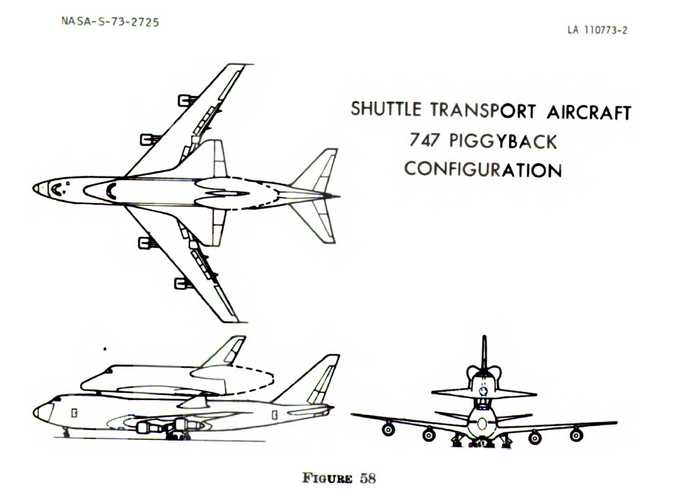 7.png390.8 KB · Views: 66
7.png390.8 KB · Views: 66 -
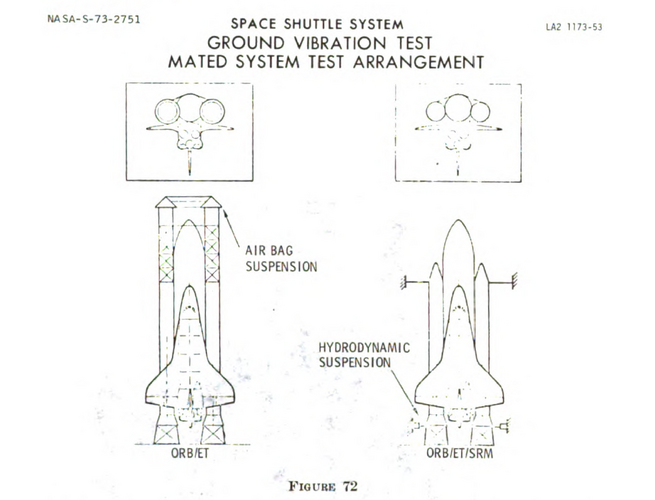 8.png464.7 KB · Views: 65
8.png464.7 KB · Views: 65 -
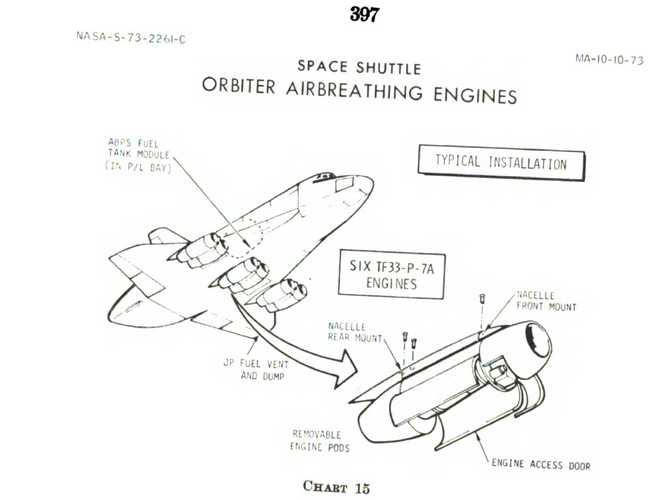 9.png428 KB · Views: 73
9.png428 KB · Views: 73 -
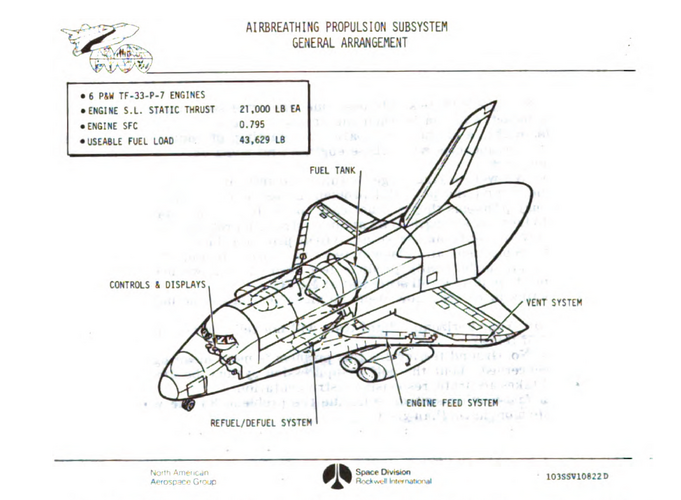 10.png633 KB · Views: 73
10.png633 KB · Views: 73 -
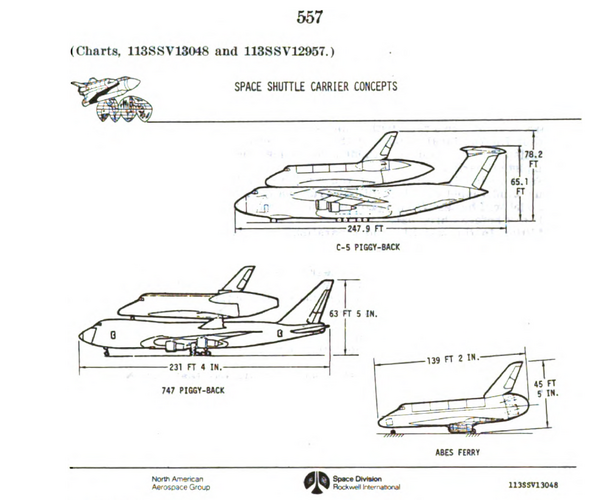 11.png581.4 KB · Views: 76
11.png581.4 KB · Views: 76 -
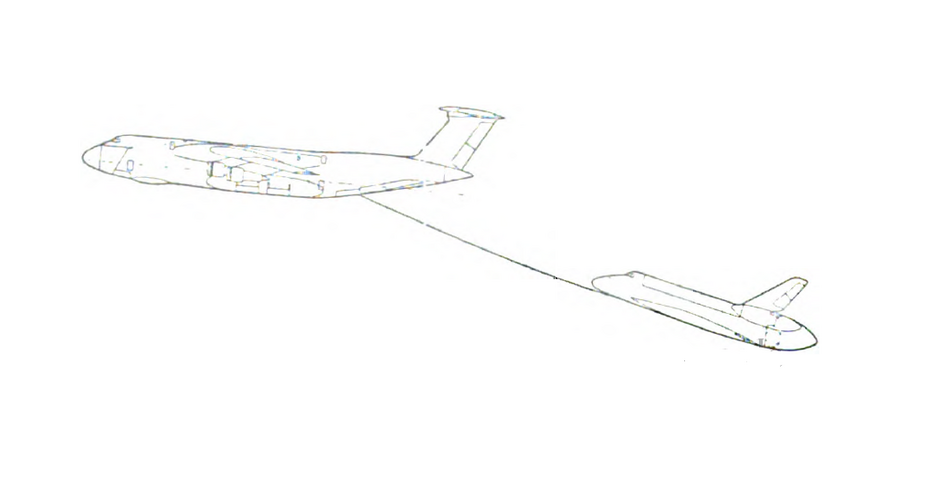 12.png96.7 KB · Views: 71
12.png96.7 KB · Views: 71 -
 13.png68.2 KB · Views: 71
13.png68.2 KB · Views: 71 -
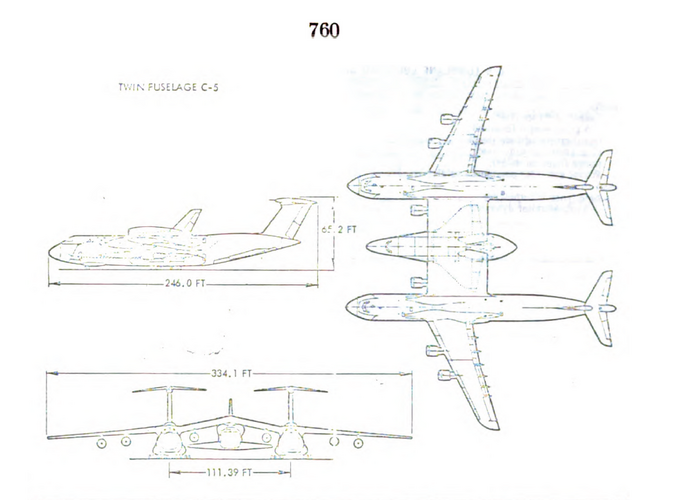 14.png415 KB · Views: 61
14.png415 KB · Views: 61 -
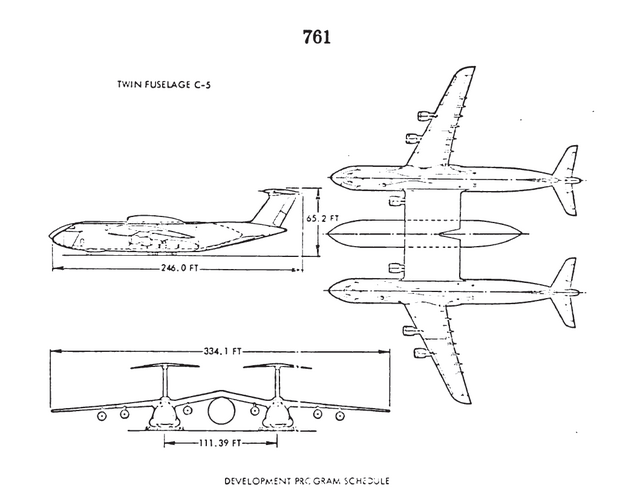 15.png46.3 KB · Views: 60
15.png46.3 KB · Views: 60 -
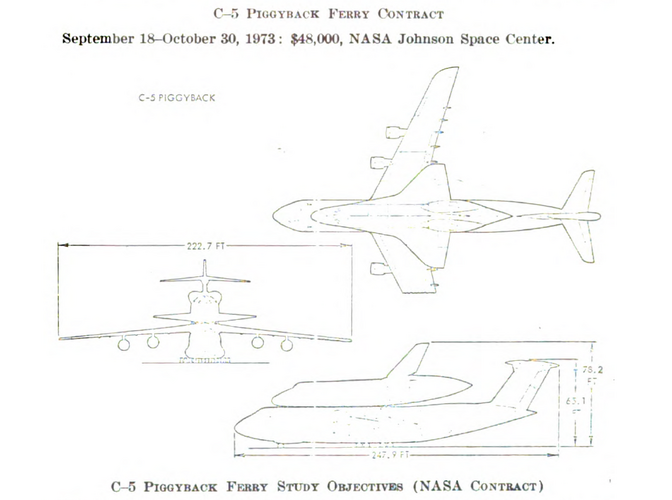 16.png427.1 KB · Views: 59
16.png427.1 KB · Views: 59 -
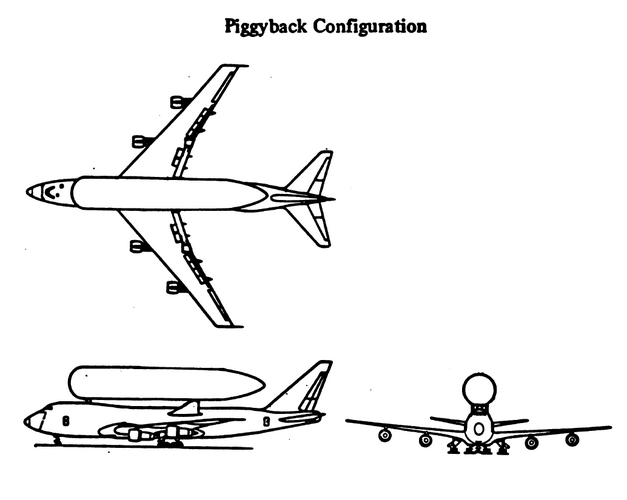 17.png42.6 KB · Views: 63
17.png42.6 KB · Views: 63
- Joined
- 29 September 2006
- Messages
- 1,789
- Reaction score
- 1,357
By Shuttle-Tug, do you mean the towplane?From this Report,
please notice,the Shuttle-Tug.
Wait, da f*ck is that ? is the C-5 towing or refueling the orbiter ? in both case, it borders on insanity...
- Joined
- 16 April 2008
- Messages
- 9,601
- Reaction score
- 14,474
By Shuttle-Tug, do you mean the towplane?From this Report,
please notice,the Shuttle-Tug.
The report cover page (image 1) talks about Space Tug, which is something different, basically an orbital transfer vehicle to complement the Shuttle as part of the Space Transportation System:
- Joined
- 29 September 2006
- Messages
- 1,789
- Reaction score
- 1,357
Thanks TomS! I was expecting something in the body of the article.By Shuttle-Tug, do you mean the towplane?From this Report,
please notice,the Shuttle-Tug.
The report cover page (image 1) talks about Space Tug, which is something different, basically an orbital transfer vehicle to complement the Shuttle as part of the Space Transportation System:
- Joined
- 5 May 2007
- Messages
- 1,481
- Reaction score
- 2,855
I really can't decide whether that, or the C-5 on stilts, is a crazier idea.
Wait, da f*ck is that ? is the C-5 towing or refueling the orbiter ? in both case, it borders on insanity...
- Joined
- 16 April 2008
- Messages
- 9,601
- Reaction score
- 14,474
This is what they were talking about. I think it eventually became just the Inertial Upper Stage in the shuttle payload bay.Thanks TomS! I was expecting something in the body of the article.By Shuttle-Tug, do you mean the towplane?From this Report,
please notice,the Shuttle-Tug.
The report cover page (image 1) talks about Space Tug, which is something different, basically an orbital transfer vehicle to complement the Shuttle as part of the Space Transportation System:
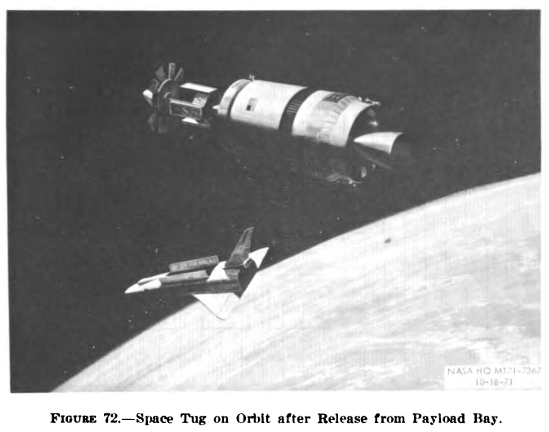
PS: If you're so inclined, the full report is here at the link below on Google Books. It doesn't say much about the C-5 towplane idea, except that it was a Lockheed internal study. It looks like it was maybe intended mostly for air-launched flight test (the glide tests that were eventually done off the back of the 747 SCS) but they do list a range of a couple thousand miles so it may also have been considered as a ferry technique. (See p.773 of the PDF)
Last edited:
- Joined
- 5 May 2007
- Messages
- 1,481
- Reaction score
- 2,855
The 'I' in IUS originally stood for 'Interim', because it was supposed to be a quick, low-risk development to give an upper stage for the Shuttle before the more sophisticated, higher-capability Space Tug entered service.This is what they were talking about. I think it eventually became just the Inertial Upper Stage in the shuttle payload bay.
- Joined
- 29 September 2006
- Messages
- 1,789
- Reaction score
- 1,357
I’ll have to take a look at the link when I’ve got the time.This is what they were talking about. I think it eventually became just the Inertial Upper Stage in the shuttle payload bay.Thanks TomS! I was expecting something in the body of the article.By Shuttle-Tug, do you mean the towplane?From this Report,
please notice,the Shuttle-Tug.
The report cover page (image 1) talks about Space Tug, which is something different, basically an orbital transfer vehicle to complement the Shuttle as part of the Space Transportation System:
View attachment 695284
PS: If you're so inclined, the full report is here at the link below on Google Books. It doesn't say much about the C-5 towplane idea, except that it was a Lockheed internal study. It looks like it was maybe intended mostly for air-launched flight test (the glide tests that were eventually done off the back of the 747 SCS) but they do list a range of a couple thousand miles so it may also have been considered as a ferry technique. (See p.773 of the PDF)
As for the Space Tug, there was a stage where it was going to be European-led in the early 70s, so the report could be referring to that iteration of the proposal.
- Joined
- 16 April 2008
- Messages
- 9,601
- Reaction score
- 14,474
As for the Space Tug, there was a stage where it was going to be European-led in the early 70s, so the report could be referring to that iteration of the proposal.
It talks about this iteration as a USAF program, so basically IUS.
Edit: It does go on to talk about future developments for stage reusability and payload retrieval, none of which ever came about. But it looks like this is after the European involvement dropped away.
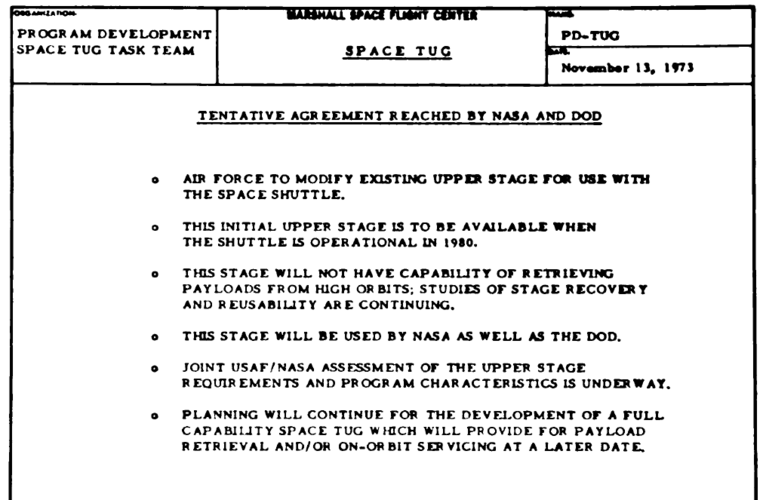
Last edited:
- Joined
- 13 June 2007
- Messages
- 2,173
- Reaction score
- 3,087
Good Day All -McDonnell Douglas space shuttle concept model found on eBay.
URL:http://www.secretprojects.co.uk/forum/Themes/Aeroish/images/bbc/quote.gif
Seller's description:
Genuine manufacturer's resin model of McDonnell Douglas' space shuttle concept. Booster stage is 9" long, with 5" wingspan. The model could maybe use a light cleaning, and there are a few very small paint chips, and one equally small decal chip. Front locator pin for the shuttle stage is sheared off, but the shuttle still displays solidly on the booster. Wooden base and nameplate are in good condition.
Spent some time down at the Space Museum in Bonne Terre, Missouri and found this model of the booster for the McDonnell Douglas Martin-Marietta Phase B Booster - the model on top is not related to this and simply was on top of it in storage. A bit beat up but hey, it still exists! I will be spending more time at the Museum as I have accepted a position on the Museum Board.
Enjoy the Day! Mark
Attachments
Lovely. Now, early orbiters were to have cryogens in them. How would that affect tiles? Yes lots of small tiles swell less during the heat of descent-but wouldn't icing work apart those tiles on ascent? StarshIp will face that question. We think of STS as a miserable compromise-but it starts looking better and better as time goes on.
Similar threads
-
-
-
-
Candidate Space Shuttle Orbiters Wind Tunnel Studies 1969 NASA Langley Research
- Started by Hanse
- Replies: 2
-

